
How to Use RES52 boost buck converter: Examples, Pinouts, and Specs
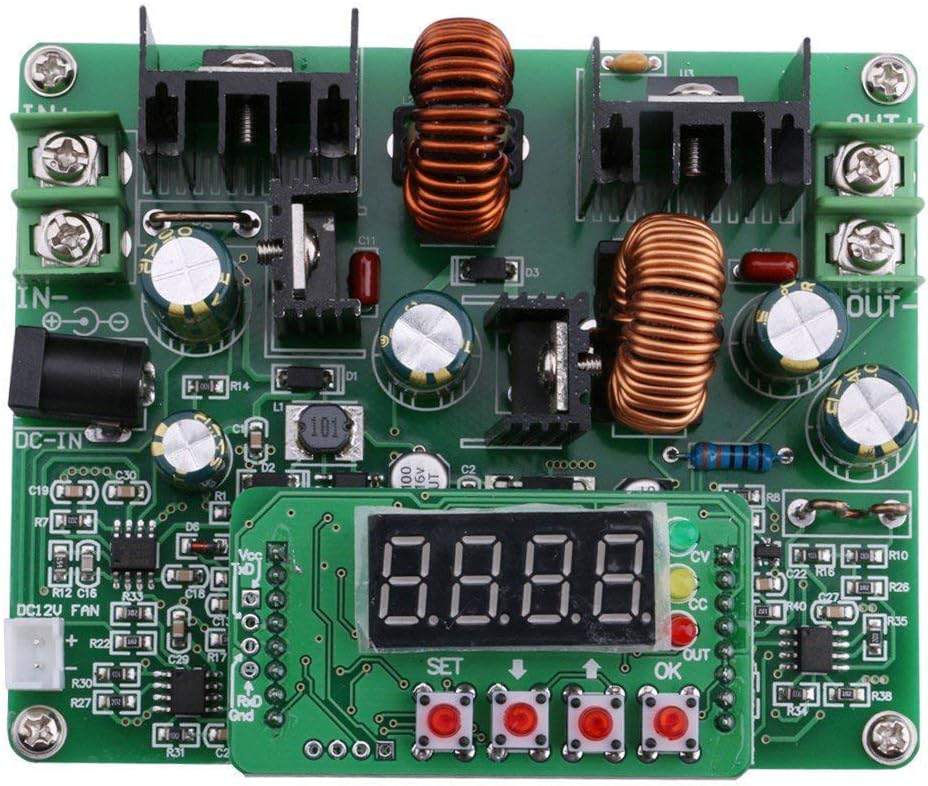
 Design with RES52 boost buck converter in Cirkit Designer
Design with RES52 boost buck converter in Cirkit DesignerIntroduction
The RES52 Boost Buck Converter, manufactured by REES52 (Part ID: converter), is a versatile DC-DC converter capable of stepping up (boosting) or stepping down (bucking) voltage levels efficiently. This component is widely used in power management applications to regulate voltage and improve energy efficiency in electronic devices. Its compact design and high efficiency make it ideal for use in battery-powered devices, embedded systems, and renewable energy systems.
Explore Projects Built with RES52 boost buck converter
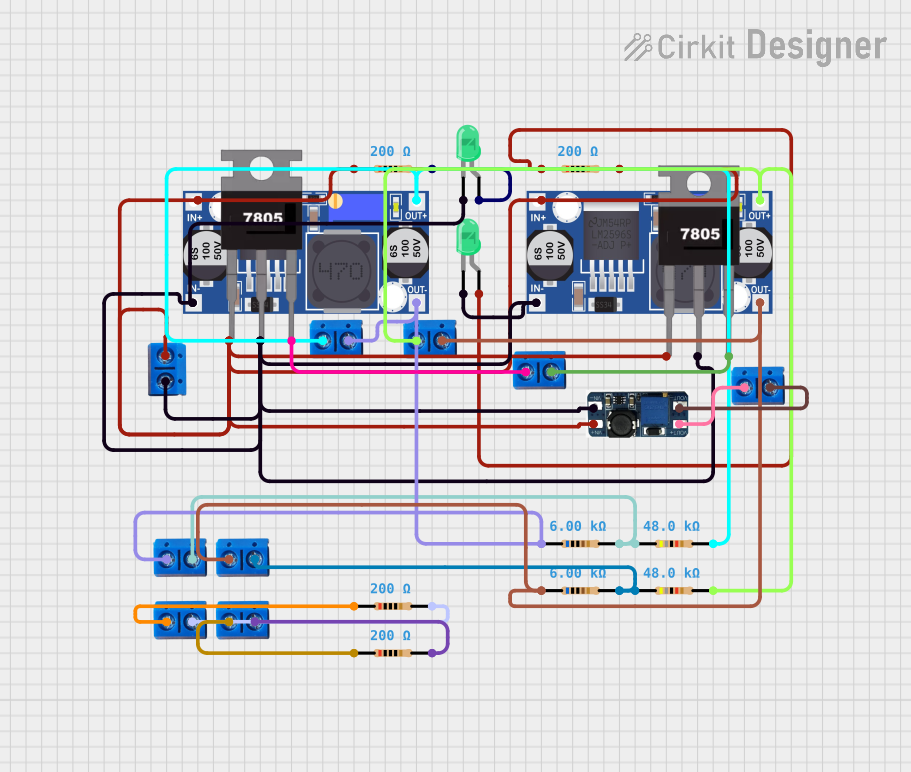
 Open Project in Cirkit Designer
Open Project in Cirkit Designer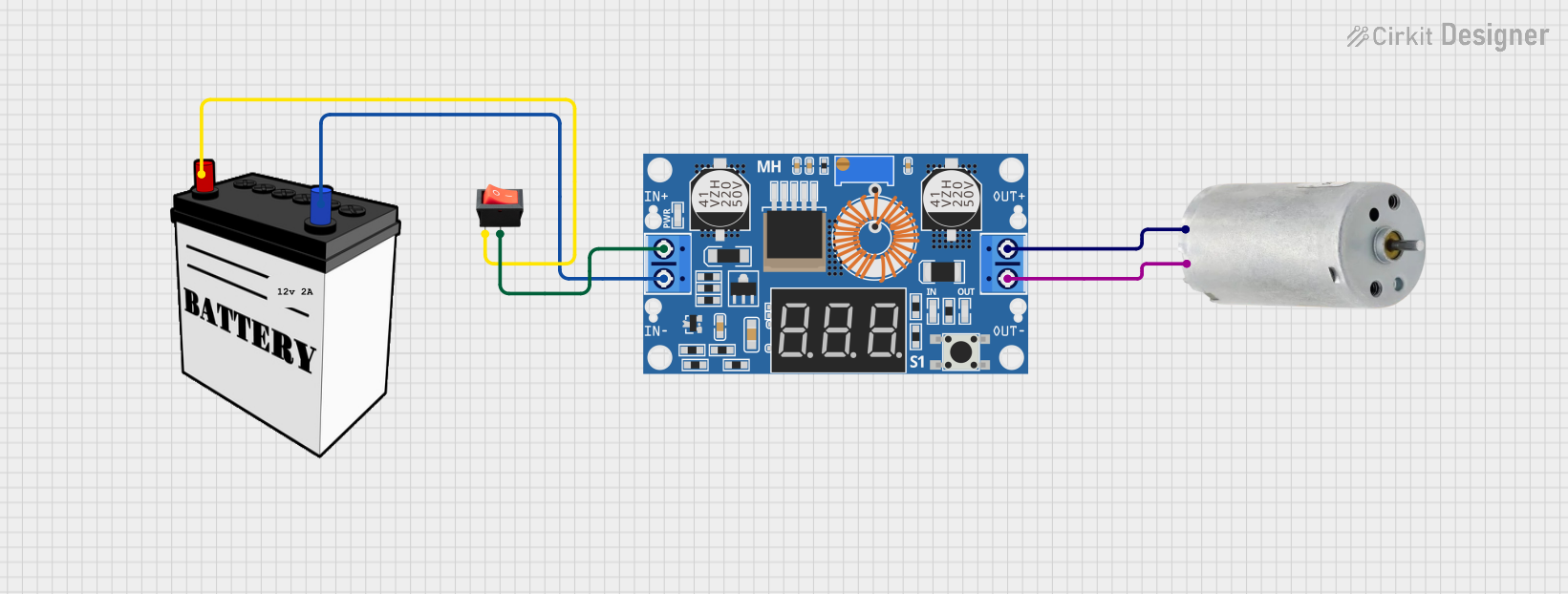
 Open Project in Cirkit Designer
Open Project in Cirkit Designer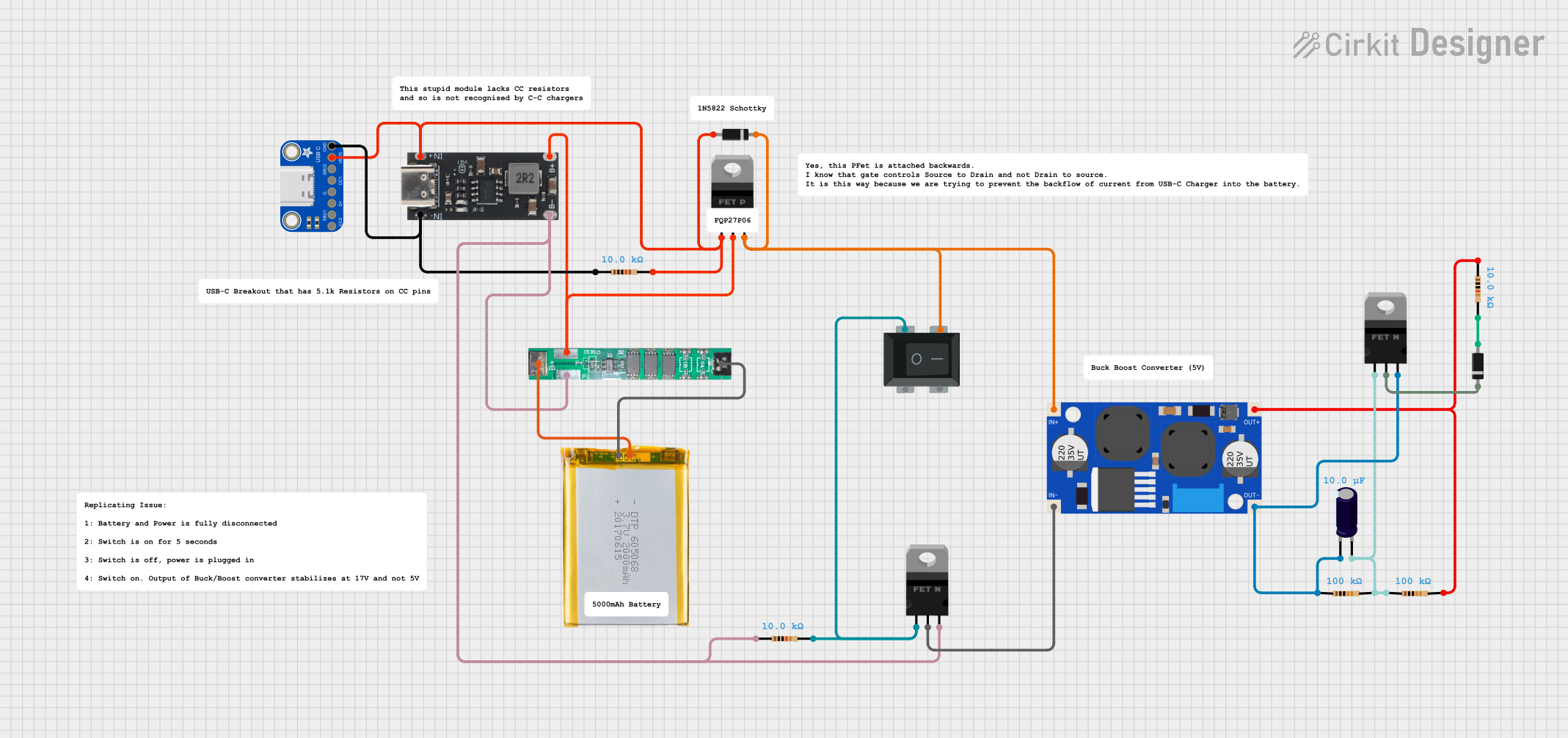
 Open Project in Cirkit Designer
Open Project in Cirkit Designer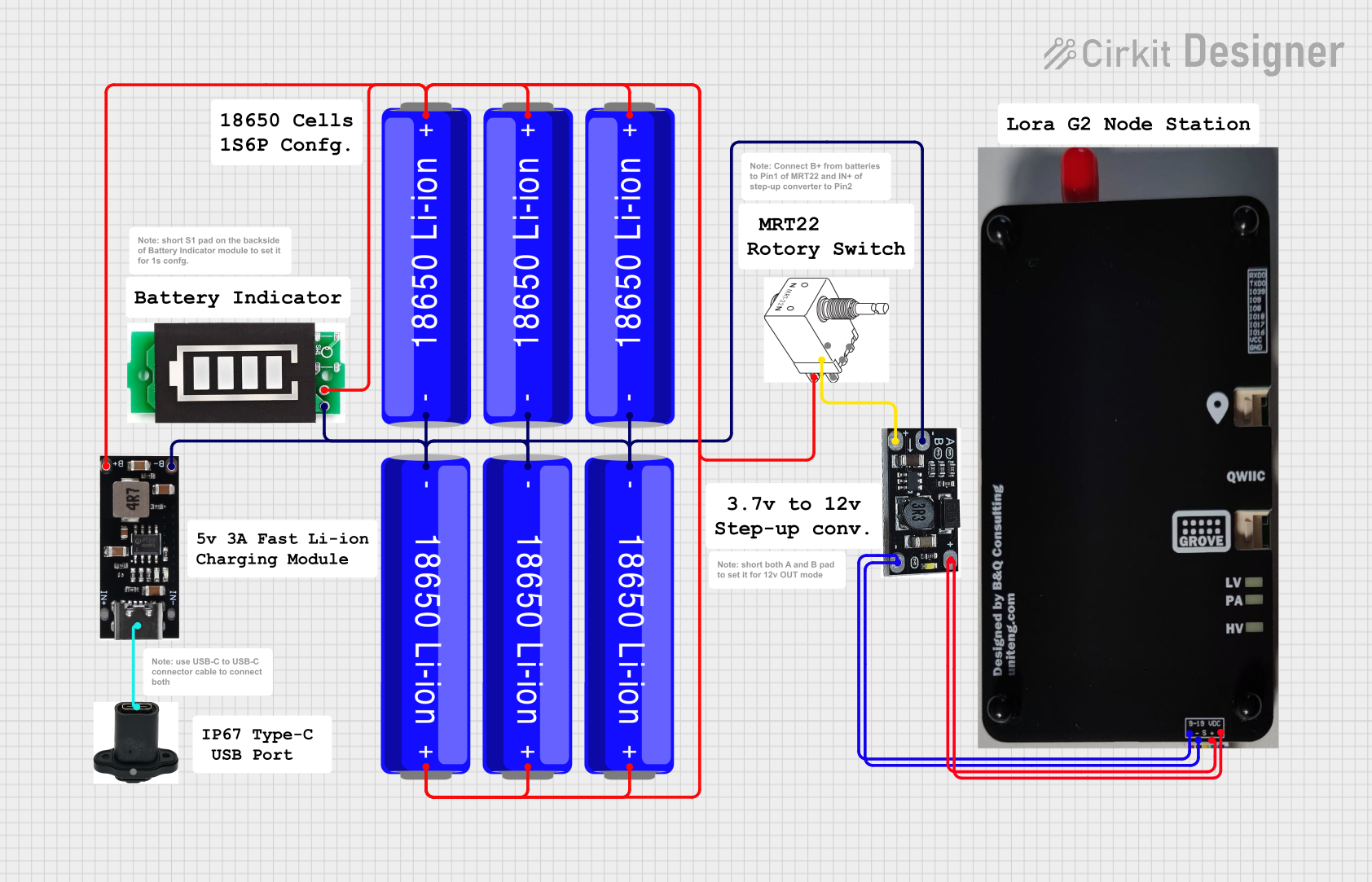
 Open Project in Cirkit Designer
Open Project in Cirkit DesignerExplore Projects Built with RES52 boost buck converter

 Open Project in Cirkit Designer
Open Project in Cirkit Designer
 Open Project in Cirkit Designer
Open Project in Cirkit Designer
 Open Project in Cirkit Designer
Open Project in Cirkit Designer
 Open Project in Cirkit Designer
Open Project in Cirkit DesignerCommon Applications and Use Cases
- Voltage regulation in battery-powered devices
- Power supply for microcontrollers and sensors
- Renewable energy systems (e.g., solar panels)
- LED drivers
- Portable electronics
- Robotics and IoT devices
Technical Specifications
The RES52 Boost Buck Converter is designed to handle a wide range of input and output voltages, making it suitable for various applications. Below are the key technical details:
General Specifications
| Parameter | Value |
|---|---|
| Input Voltage Range | 3V to 35V |
| Output Voltage Range | 1.25V to 30V |
| Maximum Output Current | 3A (with heat sink) |
| Efficiency | Up to 92% |
| Switching Frequency | 150 kHz |
| Operating Temperature | -40°C to +85°C |
| Dimensions | 43mm x 21mm x 14mm |
Pin Configuration and Descriptions
| Pin Name | Description |
|---|---|
| VIN+ | Positive input voltage terminal (connect to the power source) |
| VIN- | Negative input voltage terminal (connect to the ground of the power source) |
| VOUT+ | Positive output voltage terminal (connect to the load) |
| VOUT- | Negative output voltage terminal (connect to the ground of the load) |
| ADJ | Voltage adjustment potentiometer (used to set the desired output voltage) |
Usage Instructions
How to Use the RES52 Boost Buck Converter in a Circuit
Connect the Input Voltage:
- Connect the positive terminal of the power source to the
VIN+pin. - Connect the ground of the power source to the
VIN-pin.
- Connect the positive terminal of the power source to the
Connect the Output Load:
- Connect the positive terminal of the load to the
VOUT+pin. - Connect the ground of the load to the
VOUT-pin.
- Connect the positive terminal of the load to the
Adjust the Output Voltage:
- Use the onboard potentiometer labeled
ADJto set the desired output voltage. - Turn the potentiometer clockwise to increase the output voltage or counterclockwise to decrease it.
- Use a multimeter to measure the output voltage while adjusting.
- Use the onboard potentiometer labeled
Ensure Proper Heat Dissipation:
- If the output current exceeds 2A, attach a heat sink to the converter to prevent overheating.
Power On the Circuit:
- Once all connections are secure, power on the input source and verify the output voltage.
Important Considerations and Best Practices
- Input Voltage Range: Ensure the input voltage is within the specified range (3V to 35V) to avoid damaging the converter.
- Output Voltage Setting: Always measure the output voltage with a multimeter after adjustment to ensure accuracy.
- Current Limitation: Do not exceed the maximum output current of 3A. Use a heat sink for currents above 2A.
- Polarity: Double-check the polarity of the input and output connections to prevent damage.
- Load Connection: Avoid connecting highly inductive loads directly without proper filtering.
Example: Using the RES52 Boost Buck Converter with an Arduino UNO
The RES52 Boost Buck Converter can be used to power an Arduino UNO by stepping down a 12V input to 5V. Below is an example circuit and Arduino code:
Circuit Setup
- Connect a 12V DC power source to the
VIN+andVIN-pins of the converter. - Adjust the
ADJpotentiometer to set the output voltage to 5V. - Connect the
VOUT+pin to the 5V pin of the Arduino UNO. - Connect the
VOUT-pin to the GND pin of the Arduino UNO.
Arduino Code Example
// Example code to blink an LED using Arduino UNO powered by RES52 Boost Buck Converter
const int ledPin = 13; // Pin connected to the onboard LED
void setup() {
pinMode(ledPin, OUTPUT); // Set the LED pin as an output
}
void loop() {
digitalWrite(ledPin, HIGH); // Turn the LED on
delay(1000); // Wait for 1 second
digitalWrite(ledPin, LOW); // Turn the LED off
delay(1000); // Wait for 1 second
}
Troubleshooting and FAQs
Common Issues and Solutions
| Issue | Possible Cause | Solution |
|---|---|---|
| No output voltage | Incorrect wiring or loose connections | Verify all connections and ensure proper polarity. |
| Output voltage not adjustable | Faulty potentiometer or incorrect setup | Check the ADJ potentiometer and ensure it is functioning correctly. |
| Overheating | Excessive current draw | Attach a heat sink and ensure the current does not exceed 3A. |
| Low efficiency | Input/output voltage mismatch | Ensure the input voltage is within the specified range and properly matched. |
| Noise or instability in output | Insufficient filtering | Add capacitors at the input and output terminals to reduce noise. |
FAQs
Can the RES52 Boost Buck Converter handle AC input?
- No, the converter is designed for DC input only. Use a rectifier circuit if AC input is required.
What is the maximum power output of the converter?
- The maximum power output depends on the input voltage and current. For example, at 12V input and 3A output, the power is approximately 36W.
Can I use the converter to charge batteries?
- Yes, but ensure the output voltage and current are within the battery's charging specifications.
How do I reduce output noise?
- Add low ESR capacitors (e.g., 100µF) at the output terminals to filter noise and improve stability.
By following this documentation, users can effectively integrate the RES52 Boost Buck Converter into their projects and troubleshoot common issues with ease.